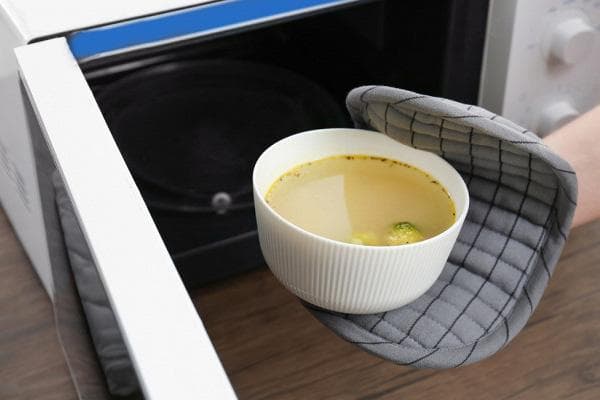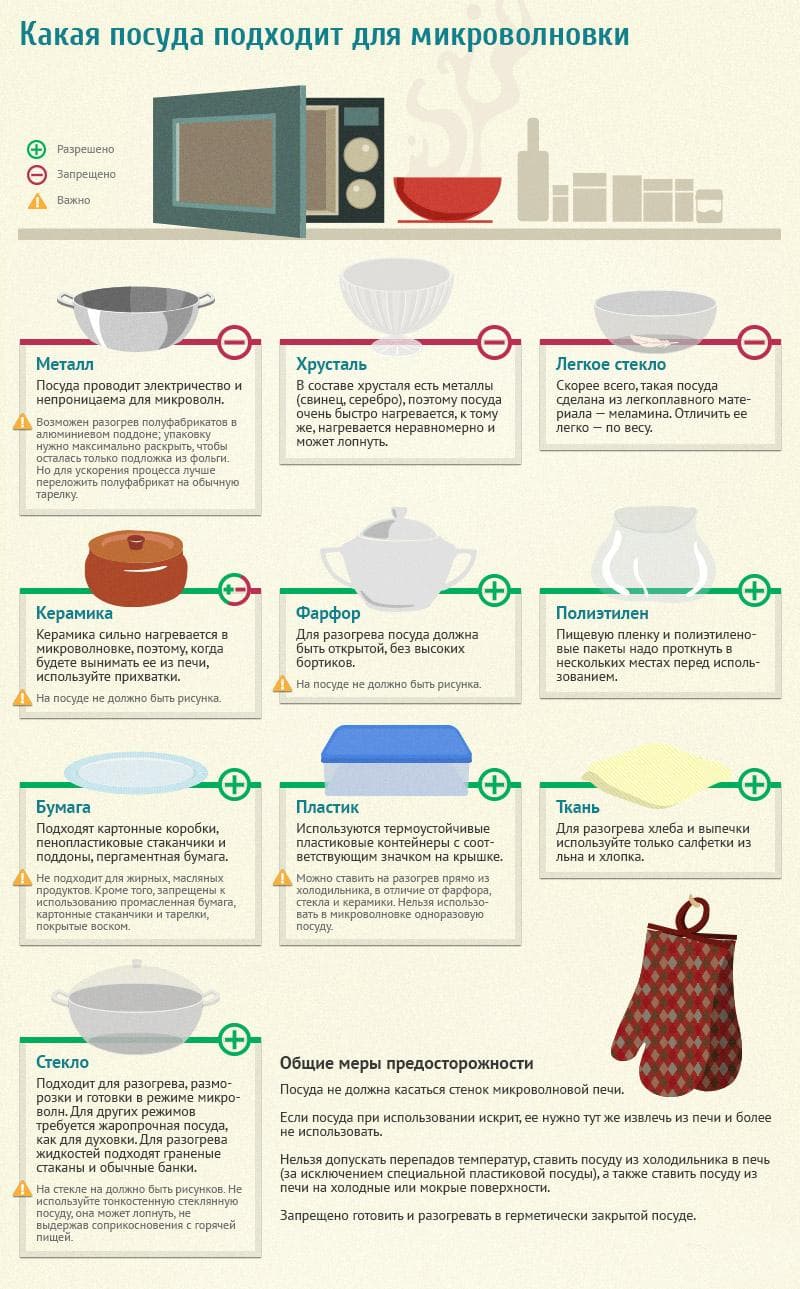A hot plate rather than microwaved food? Buy the right cookware!
A hot plate, not food in the microwave - owners of microwave ovens often face this problem. However, temperature changes are not always a sign of device failure. Most often, the reason lies in unsuitable dishes.

What dishes are heated in the microwave and why?
It is widely believed that only water molecules can be heated by microwave radiation. But in reality, microwaves interact with any materials and substances that can conduct electric current. True, they interact in different ways, because the rate and degree of heating depend on the electrical conductivity and other physical and chemical properties.
For this reason, microwave oven manufacturers recommend purchasing special utensils for heating and cooking food in microwave ovens. It contains no conductive substances, such as metals. If you use a cup or plate from an ordinary table set, there is a high probability that it will become very hot, at the same time preventing the penetration of microwaves into the thickness of the food being heated.
Another reason for heating dishes is that microwave radiation affects liquids unevenly - the same soup can be scorching near the walls of the plate and remain very cool closer to its center. To “even out” the temperature, the dish needs to be stirred.But while mixing has not occurred, the heat from the heated liquid is transferred to the dishes, as a result of which they also heat up.
Choosing the right plate
When choosing dishes for the microwave, you should first of all focus on the markings - plates, containers, glasses and cups that are not affected by microwave rays are usually marked with an icon in the form of several wavy lines.
However, the absence of such an icon does not mean that something will happen to the dishes in the microwave oven. From the usual plates and cups, you can also choose those that are quite suitable for heating food. They must have the following characteristics:
- Equal thickness of walls and bottom. Dishes with chips, embossed patterns and stucco heat unevenly, as a result of which they often crack.
- Lack of drawings and gilded rims. Paints often contain metals. When they come into contact with microwaves, they cause a short circuit. In the best case, a show of flashing lightning and sparks will begin inside the microwave oven; in the worst case, the device will completely fail.
- Lack of metals in the material from which the dishes are made. For example, a metal such as lead is an essential component of crystal, so it is better not to put crystal glasses in the microwave.
However, compliance with all the characteristics listed above does not guarantee that the dishes will not heat up more than the food placed in it. Therefore, if possible, you should still purchase special cups and plates designed for microwave ovens.
If you use special dishes designed for microwaves and do not violate the operating instructions, but the food still remains cold and the plates continue to heat up, contact a qualified microwave repair specialist.

